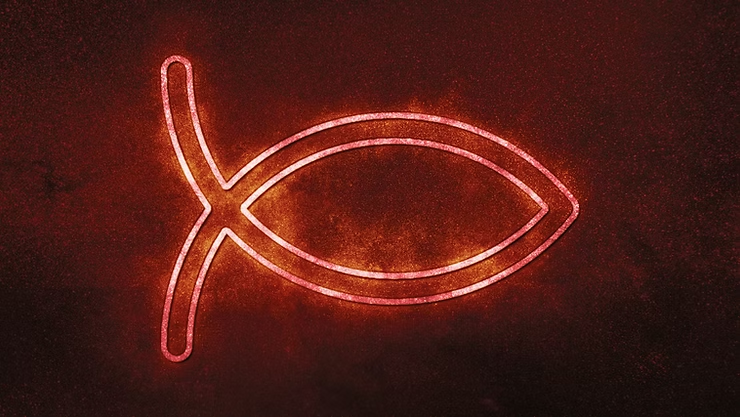Introduction
The Christian fish symbol, also known as the Ichthys, is one of the earliest and most enduring emblems of Christianity. Originating in the first centuries after Christ, it carried profound meaning for believers, evolving from a covert sign of faith to a widely recognized symbol of Christian identity and salvation.
Origins of the Ichthys
The term “Ichthys” comes from the Greek word for fish and forms an acrostic for the phrase Iēsous Christos Theou Huios Sōtēr, meaning “Jesus Christ, Son of God, Savior.” This simple image encapsulated the essence of Christian belief and served as a concise declaration of faith.
Influences from Ancient Cultures
While the fish had sacred associations in ancient Mesopotamian, Egyptian, and Greco-Roman traditions, early Christians redefined it to reflect their beliefs. The symbol provided both familiarity and new meaning, bridging cultural contexts while pointing to Christ.
Adoption by Early Christians
- Used as a secret sign during periods of persecution
- Linked to the Eucharist in early Christian art
- Represented unity and fellowship among believers
Symbolism in Scripture
In the New Testament, the fish is closely tied to Jesus’ ministry. He calls his disciples “fishers of men” in Matthew’s Gospel, highlighting the mission of evangelism. The miracle of the loaves and fishes symbolizes God’s provision and abundance, reinforcing themes of faith and divine care.
The Fish in Early Christian Art
Catacomb Paintings
In the underground burial sites of early Christians, the fish appeared frequently as a discreet yet powerful statement of belief, often connected to depictions of the Eucharist.
Mosaics and Jewelry
Church mosaics incorporated the fish alongside bread baskets, reinforcing its sacramental meaning. Jewelry such as pendants and rings bore the symbol, allowing believers to carry their faith with them both privately and publicly.
Evolution Through History
Medieval Christianity
The fish retained symbolic value in the Middle Ages, though the Latin Cross began to dominate as the primary emblem of Christian devotion, particularly during the Crusades.
Renaissance to Modern Times
During the Renaissance, the fish continued to appear in religious art, often simplified in design. In modern Christianity, it remains a visual shorthand for faith, identity, and salvation, frequently seen on cars, jewelry, and church signage.
Meaning and Significance Today
- Representation of Christ: A reminder of Jesus as Savior and divine provider
- Identity Marker: A way for believers to express and share their faith
- Symbol of Hope: A testament to the promise of eternal life
Conclusion
The Christian fish symbol has journeyed from a secret code among persecuted believers to an enduring emblem of faith. Across centuries and cultures, it has retained its core message—pointing to Jesus Christ, affirming Christian identity, and offering hope of salvation.

